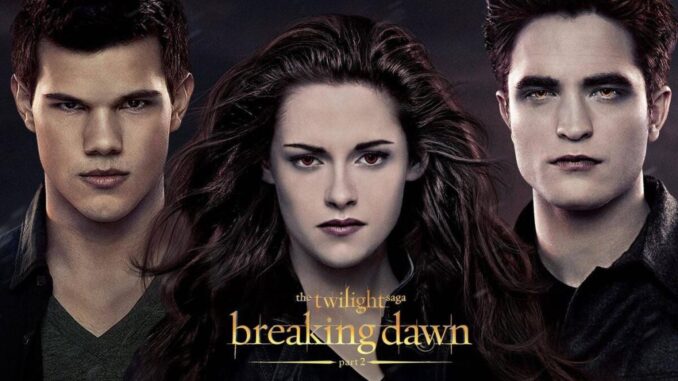
From Twilight to Breaking Dawn: The Evolution of a Cinema Legend
When Twilight first flickered onto cinema screens in 2008, it was met with a potent mix of fervent adoration and dismissive derision. Based on Stephenie Meyer’s massively popular young adult novel, it promised a brooding, forbidden romance bathed in the muted greens and greys of the Pacific Northwest. Few, perhaps even its creators, could have predicted that this seemingly unassuming vampire tale would blossom into a global phenomenon, evolving over five films into a sprawling cinematic legend that reshaped the landscape of Hollywood and indelibly marked a generation. The journey from the intimate, almost indie feel of Twilight to the epic, star-studded climax of Breaking Dawn is a testament to an accidental empire’s remarkable evolution.
The first film, Twilight, directed by Catherine Hardwicke, arrived with an air of delicate intimacy. Its visual palette was distinct – rain-slicked forests, a perpetual twilight sky, and the stark contrast of Bella Swan’s pale humanity against Edward Cullen’s alabaster skin and glittering, diamond-like glow. The film’s strength lay in its almost palpable atmosphere of yearning and dangerous romance. Kristen Stewart’s awkward, intensely internal Bella, and Robert Pattinson’s tortured, intensely external Edward, became the archetypes of a generation. The focus was narrow: the intensity of first love, the agony of forbidden desire, and the whispered secrets of a hidden world. Critics might have scoffed at its earnestness or its less-than-stellar special effects, but audiences, primarily young women, connected to its emotional core with a fervor that defied explanation. This was not yet a legend, but a cultural lightning rod, proving that a specific, passionate audience could ignite a box office blaze.
As the saga progressed through New Moon and Eclipse, the world of Twilight began to expand, both geographically and emotionally. The intimate focus on Bella and Edward widened to encompass the complex love triangle with Jacob Black, introducing the raw, primal energy of the Quileute shapeshifters. The cinematic scale grew, too. Where Twilight felt almost claustrophobic in its romantic intensity, the sequels introduced more action sequences, more supernatural lore, and a larger ensemble of characters. We saw the opulent extravagance of the Volturi in Italy, the ancient power that governed the vampire world, and the escalating threats that forced Bella to confront her own destiny. The stories deepened, exploring themes of loyalty, sacrifice, and the often-painful transition from adolescence to adulthood. The evolution here was not just in plot, but in the growing sense of consequence for Bella’s choices. She was no longer just a girl in love; she was a fulcrum upon which the fate of both human and supernatural worlds seemed to hinge.
The true culmination of this evolution arrived with Breaking Dawn, split into two parts under the seasoned direction of Bill Condon. Breaking Dawn Part 1 was a radical departure, plunging the beloved characters into distinctly adult territory. The long-awaited wedding was a grand, meticulously crafted affair, followed by a honeymoon that dared to depict the physical intimacy that had long been hinted at. But it was Bella’s miraculous, terrifying pregnancy – a harrowing, visceral sequence that blended body horror with emotional vulnerability – that truly showcased the saga’s dramatic maturation. Bella’s transformation from a fragile human to a powerful vampire was no longer a theoretical choice but a brutal necessity, cementing her as an active participant in her own destiny, not merely a spectator. The visuals became darker, more intense, reflecting the heightened stakes and the brutal beauty of her rebirth.
Breaking Dawn Part 2 solidified the franchise’s legendary status. Gone was the whispered romance of Forks; in its place was an epic showdown of global proportions. Bella, now a supernaturally strong and fiercely protective vampire, stood shoulder-to-shoulder with Edward, a true partner in battle. The final film assembled a vast and diverse cast of international vampires, each with unique powers, creating a sense of epic scale and global stakes. The climactic battle sequence, while ultimately a vision rather than a full-scale physical confrontation, was a brilliant stroke of narrative and cinematic tension, delivering the visceral thrill of an action blockbuster while preserving the emotional core of the characters’ fight for family. The once shy, awkward human had become a formidable force, the ultimate protector of her hybrid child, Renesmee, embodying the full arc of the series’ character development.
From its humble, rain-soaked beginnings to its grand, snow-dusted finale, The Twilight Saga transformed from a polarizing teen romance into an undeniable cinematic legend. It grossed billions globally, launched the careers of its young leads into superstardom, and proved the immense power of a dedicated fan base. Its evolution was not just in budget or special effects, but in its narrative scope, its thematic depth, and its willingness to allow its characters to grow from naive youth to seasoned, powerful adults. Twilight began as a whisper in the woods; Breaking Dawn ended with a roar that echoed across the cinematic landscape, leaving an indelible mark as a defining saga of its era, a true legend of the silver screen.
